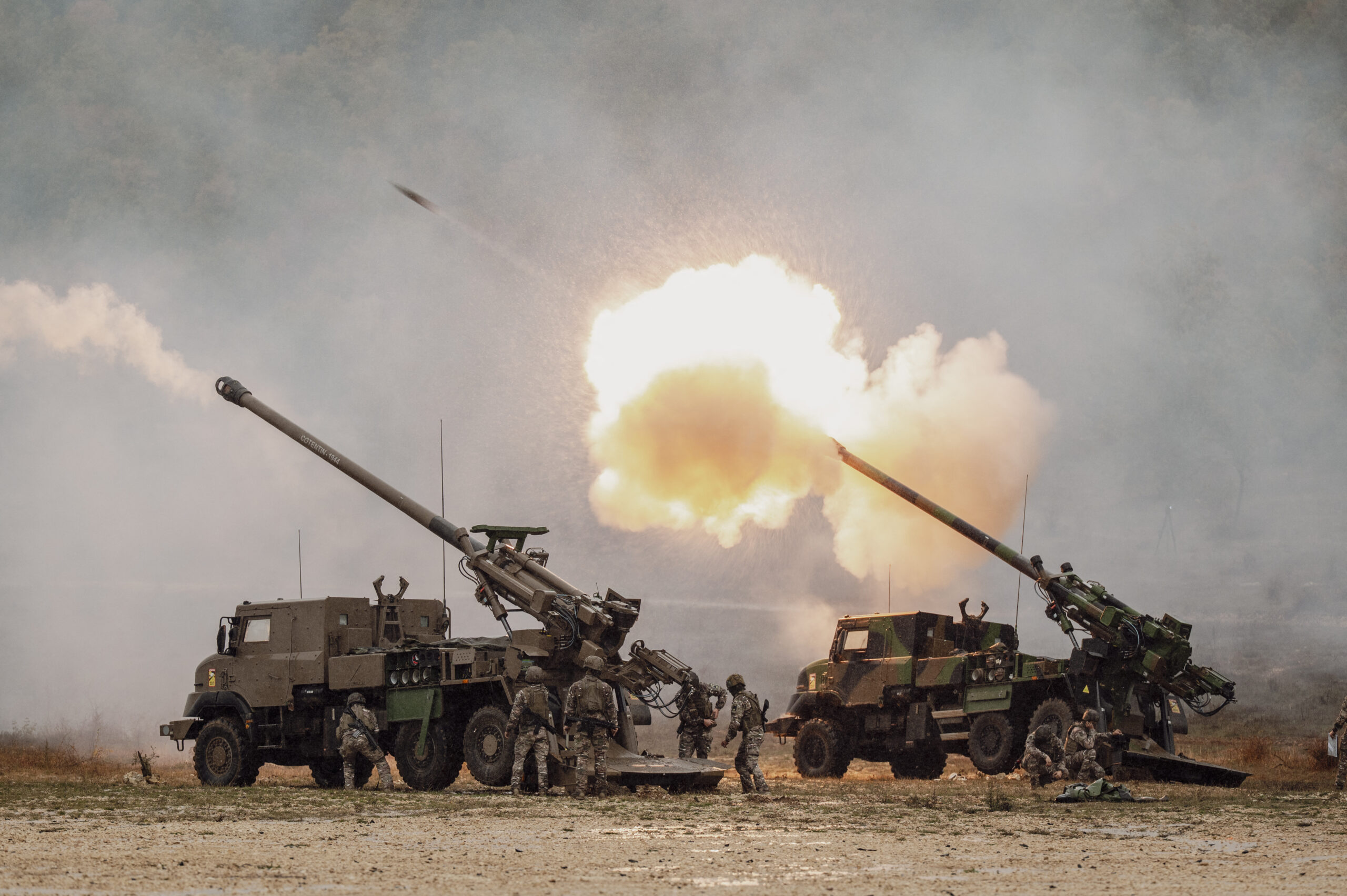World
French Artillery Unit Adapts Tactics Amid Challenging Conditions

A recent demonstration by the French Army’s 35th Parachute Artillery Regiment at Camp de Canjuers highlighted the complexities of modern warfare. Heavy rain rendered many unmanned aerial systems inoperable, underscoring lessons learned from the ongoing conflict in Ukraine. The event, attended by various military delegations and the arms manufacturer KNDS, showcased how adverse weather can impact military operations.
Rainfall grounded helicopters and drones while other logistical challenges arose, such as civilian aircraft circling over Canjuers due to restrictions at Nice airport. Despite these issues, the demonstration illustrated the regiment’s efforts to adapt to a battlefield increasingly dominated by drone technology.
Lt. Col. Renaud Durbecq, the regiment’s operations and training chief, emphasized that artillery remains crucial on the battlefield. The regiment primarily operates the Caesar 155mm howitzer, stating, “Artillery is becoming increasingly important… our guns are precisely the weapon that allows us to fire at the furthest range.” This adaptability is essential as the regiment continues to enhance its capabilities in response to evolving threats.
The 35e RAP is integrating drone technology at a rapid pace, boasting five times as many drones as it had last year, along with tripled drone pilots and doubled flight hours. The Delair DT46 drone plays a significant role in intelligence gathering and target acquisition, with a range of approximately 80 kilometers. This integration allows for immediate targeting when a drone identifies a threat.
Moreover, the regiment is introducing six experimental Proteus anti-drone cannons, designed to counter unmanned aerial systems. During recent tests, the regiment successfully used the 20mm cannon to neutralize drones immobilized by the Nerod handheld jammer, developed by French firm MC2 Technologies. This system represents the first operational use of the Proteus by a French military unit and demonstrates innovative approaches to counter-drone measures.
As the conflict in Ukraine continues to evolve, new tactical methods have emerged, which the French Army is considering. Olivier Fort, a former artillery colonel now with KNDS, highlighted the importance of prepositioning artillery rounds and propellant charges at firing sites. This strategy helps minimize the risk of secondary explosions from drone attacks.
Fort noted that approximately 75% of artillery units in Ukraine have been destroyed by remotely operated munitions, indicating the urgent need for adapted tactics. He explained that the Caesar howitzer, loaded externally, is less vulnerable than tracked armored systems that carry ammunition onboard, which can lead to catastrophic losses when targeted.
The adaptability of the French artillery unit also extends to operational readiness. The regiment is training reservists for artillery roles and enhancing mortar support teams within infantry regiments, reflecting the need for greater combat mass in contemporary warfare.
With a focus on operational preparation for extended engagements, the regiment is conducting a six-week training deployment at Canjuers. Lt. Col. Durbecq expressed satisfaction with the current iteration of the Caesar howitzer, citing its mobility, range, and firepower as key advantages.
Durbecq remarked, “Each system has its advantages and disadvantages… I believe that I need a system that is reliable, and that must be its greatest quality.” This commitment to adaptability and resilience will be crucial as the French Army navigates the challenges of modern conflicts shaped by lessons from Ukraine.
-

 Business2 weeks ago
Business2 weeks agoIconic Sand Dollar Social Club Listed for $3 Million in Folly Beach
-

 Politics2 weeks ago
Politics2 weeks agoAfghan Refugee Detained by ICE After Asylum Hearing in New York
-

 Health2 weeks ago
Health2 weeks agoPeptilogics Secures $78 Million to Combat Prosthetic Joint Infections
-

 Science2 weeks ago
Science2 weeks agoResearchers Achieve Fastest Genome Sequencing in Under Four Hours
-

 Lifestyle2 weeks ago
Lifestyle2 weeks agoJump for Good: San Clemente Pier Fundraiser Allows Legal Leaps
-

 Health2 weeks ago
Health2 weeks agoResearcher Uncovers Zika Virus Pathway to Placenta Using Nanotubes
-

 Science2 weeks ago
Science2 weeks agoInterstellar Object 3I/ATLAS Emits Unique Metal Alloy, Says Scientist
-

 World2 weeks ago
World2 weeks agoUS Passport Ranks Drop Out of Top 10 for First Time Ever
-

 Business2 weeks ago
Business2 weeks agoSan Jose High-Rise Faces Foreclosure Over $182.5 Million Loan
-

 Science2 weeks ago
Science2 weeks agoMars Observed: Detailed Imaging Reveals Dust Avalanche Dynamics
-

 Entertainment2 weeks ago
Entertainment2 weeks agoJennifer Lopez Addresses A-Rod Split in Candid Interview
-

 World2 weeks ago
World2 weeks agoRegional Pilots’ Salaries Surge to Six Figures in 2025









